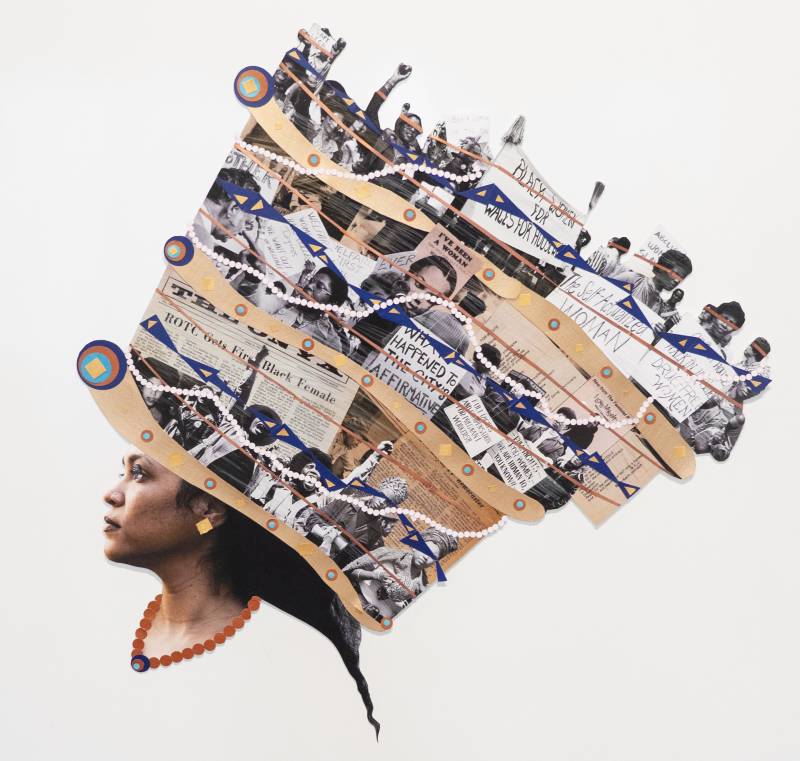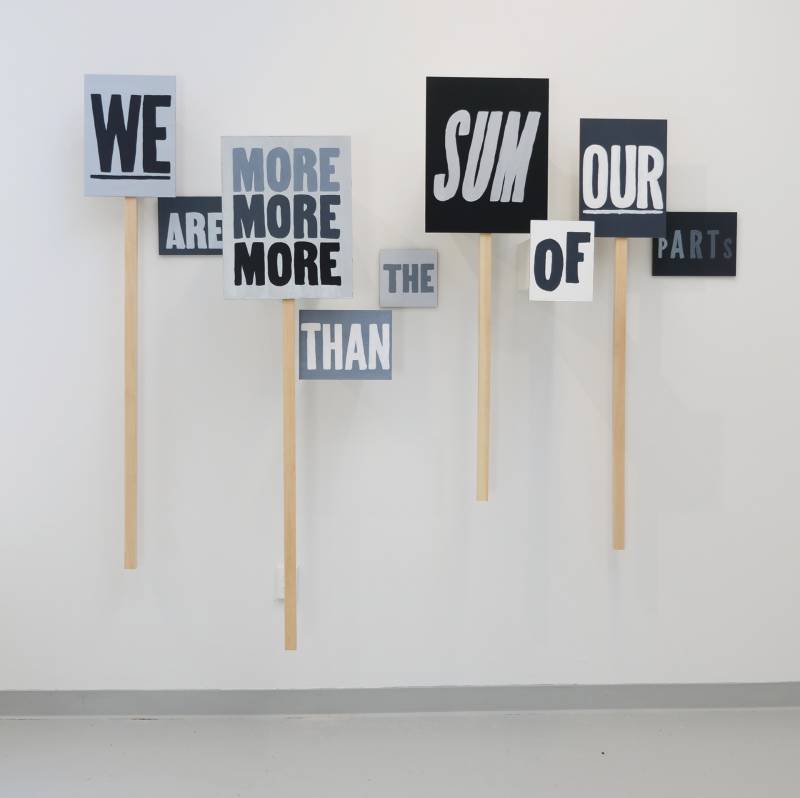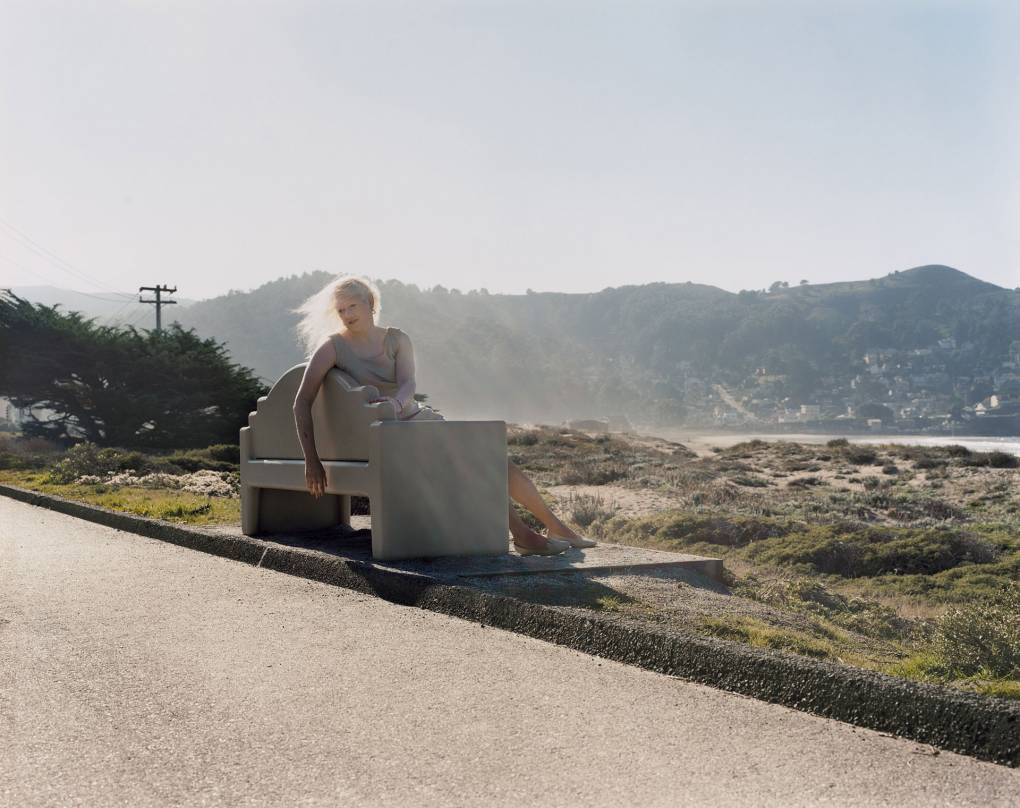Around the world and throughout history, humans have worn headdresses to reflect social status, amplify distinctive characteristics and pay tribute to personal and social history. In Helina Metaferia: All Put Together, the Bolinas Museum exhibits several of the elaborate headdresses the titular artist created to honor women who have dedicated themselves to civil rights causes. Both art and protest, Metaferia’s pieces respect the complicated nature of intersectional identities and systemic oppression while also offering a dazzling feast for the eyes.
From afar, these headdresses look elaborate and magnificent, arrayed in hues of gold, royal blue and purple, and adorned with jewel-like objects and centerpieces. A closer inspection shows them to be collages. Each one is composed of archival texts and images documenting complicated histories in the battle for equal rights, dignity and basic respect.
Since 2018 Metaferia has traveled to various cities, discovering the histories of civil rights struggles that occurred there, then using what she had learned to create her collages. In doing this, Metaferia digs into the archives of each city she visits, then brings this archival material into workshops held with women of color. In these workshops, she creates mixed-media collages that eventually take the shape of grand headdresses adorning photos of workshop participants.

Five of Metaferia’s headdresses form the center of the Bolinas Museum’s exhibition, along with a looped video of women who have participated in the series. There’s also an enormous, hand-sewn tapestry and a collection of protest signs that collectively read “We Are More Than the Sum of Our Parts.” These large-form works quietly command the museum’s main gallery, giving Metaferia’s subjects a sense of great strength and endurance for how they so effortlessly balance these gigantic adornments on their heads.
Resilience is also implied through the layers of historical documents and images of activists that are collaged into the headpieces. Aesthetically, the exhibit evokes nobility and timelessness—the works feel almost classical because of the postures of the wearers and the way that the headdresses themselves spread out from the crown of the head in impressive V-like shapes.





